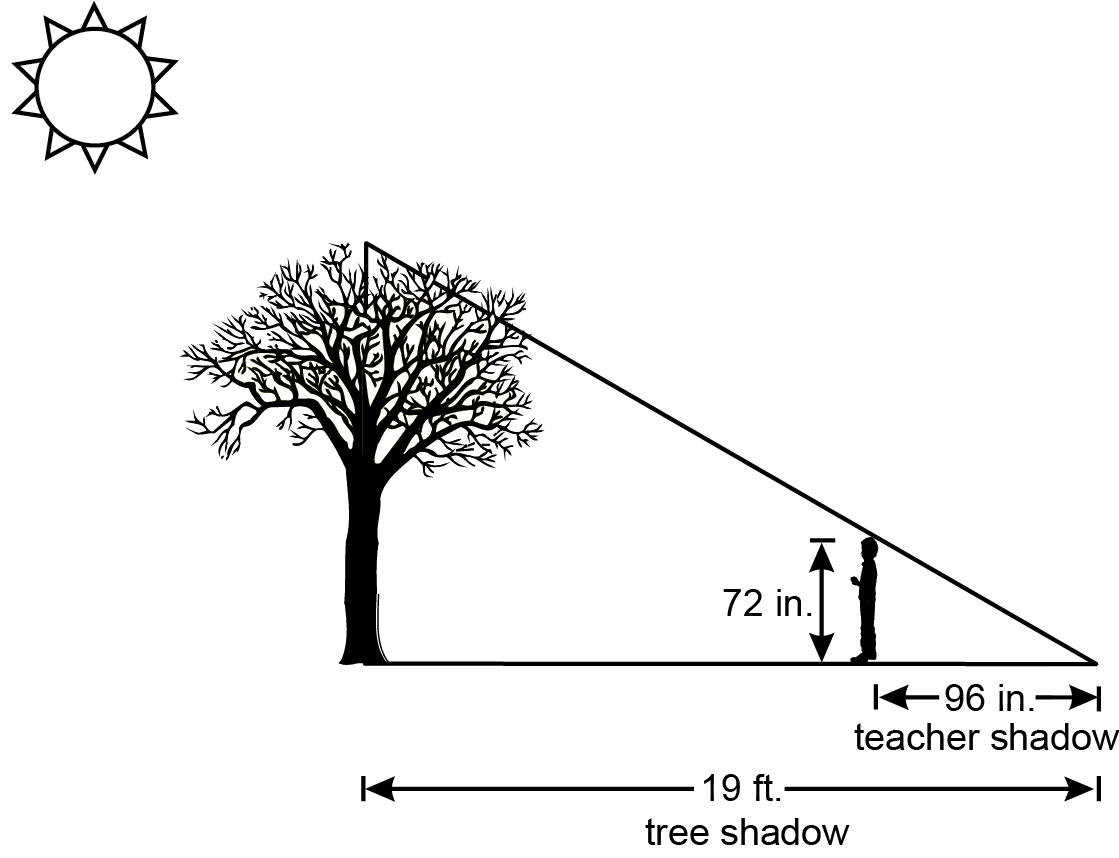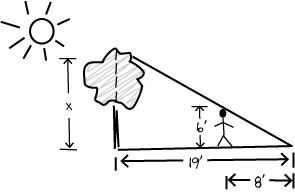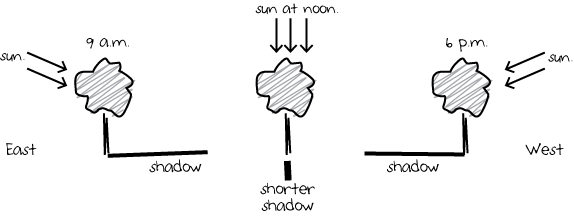Test Information Guide
Field 278: General Curriculum
Subtest 2: Mathematics, Science, and Technology/Engineering
Sample Open-Response Item
The following materials contain:
- Sample test directions for the open-response item
- A sample open-response item
- An example of a strong response to the open-response item
- The scoring rubric
Sample Test Directions for Open-Response Items
This section of the test consists of an open-response item assignment. You will be asked to prepare a written response of approximately 1to2 pages, for the assignment.
Read the assignment carefully before you begin your response. Think about how you will organize your response. You may use the erasable notebooklet to make notes, write an outline, or otherwise prepare your response. However, your final response must be either:
- typed into the on-screen response box,
- written on a response sheet and scanned using the scanner provided at your workstation, or
- provided using both the on-screen response box (for typed text) and a response sheet (for calculations or drawings) that you will scan using the scanner provided at your workstation.
Instructions for scanning your response sheet(s) are available by clicking the "Scanning Help" button at the top of the screen.
As a whole, your response to the assignment must demonstrate an understanding of the knowledge of the field. In your response to the assignment, you are expected to demonstrate the depth of your understanding of the subject area by applying your knowledge rather than by merely reciting factual information.
Your response to the assignment will be evaluated based on the following criteria.
- PURPOSE: the extent to which the response achieves the purpose of the assignment
- SUBJECT KNOWLEDGE: appropriateness and accuracy in the application of subject knowledge
- SUPPORT: quality and relevance of supporting evidence
- RATIONALE: soundness of argument and degree of understanding of the subject area
The open-response item assignment is intended to assess subject knowledge. Your response must be communicated clearly enough to permit valid judgment of the evaluation criteria by scorers. Your response should be written for an audience of educators in this field. The final version of your response should conform to the conventions of edited American English. Your response should be your original work, written in your own words, and not copied or paraphrased from some other work.
Be sure to write about the assigned topic. You may not use any reference materials during the test. Remember to review your work and make any changes you think will improve your response.
Any time spent responding to the assignment, including scanning the response sheet(s), is part of your testing time. Monitor your time carefully. When your testing time expires, a pop-up message will appear on-screen indicating the conclusion of your test session. Only response sheets that are scanned before you end your test or before time has expired will be scored. Any response sheet that is not scanned before testing ends will NOT be scored.
Sample Open-Response Item
Objective 0020
Prepare an organized, developed analysis of a scenario that integrates science/engineering and mathematics content and practices.
Use the information that appears in the exhibit to complete the assignment that follows.
Using your knowledge of Earth and space science, as well as your knowledge of representing and interpreting data, analyze the information provided and write a response of approximately 150–300 words, or 1–2 pages, in which you:
- Use proportional reasoning to calculate the approximate height of the tree in feet. Be sure to show the steps you used to arrive at your answer.
- Explain how and why the length and direction of the tree's shadow changes between 9 A M, noon, and 6 P M
Exhibit
Students are measuring the length of their shadows at different times of the day. Students observe that their shadows appear longer in the morning and late afternoon, with the shadows being shortest at noon. The teacher is 72 inches tall. The students measure the teacher's shadow at 3:00 p.m. and record it as 96 inches long. At?the same time, a nearby tree casts a shadow that is 19 feet long. The students model the teacher's shadow and the angle of the Sun with the diagram shown below.
An outdoor scene of a sun, tree, and person are shown. The sun, the top of the tree, and the top of the person's head are positioned along the same line. A line segment that represents the hypotenuse of a right triangle extends from the top of the tree to the top of the person's head and continues until it touches the ground. From the point, another line segment extends left, passing through the bottom of the person's feet to the base of the tree. From that point, another line segment extends upward from the point to the top of the tree, completing the triangle.
Three dimensions are provided: the person is 72 inches tall; the horizontal distance from their feet to the right vertex of the triangle, labeled teacher's shadow, is 96 inches; and the distance of the bottom leg of the triangle, labeled tree shadow, is 19 feet.
Sample Strong Response to the Open-Response Item
The sample response below reflects a strong knowledge and understanding of the subject matter.
The triangle that's formed by the height of the teacher and the length of their shadow is similar to the triangle that's formed by the unknown height of the tree and the length of its shadow. Both triangles have the same ratio of height to base. Changing 72 inches and 96 inches to feet (by dividing each by 12 inches/foot) yields 6 feet and 8 feet. (See computation and Graphic #1 below.)
As the Earth rotates on its axis, the sun appears at different positions in the sky--lower and in the east in the morning as it rises, higher and more overhead at noon, and then lower and in the west at the end of the day as it sets.
The shadow cast by the tree will point in the opposite direction from where the light comes from the sun. At 9 a.m. the shadow will point to the west, at 6 p.m. the shadow will point east. Because the sun is lower at these times, these shadows will be longer than at noon when the sun is more overhead and the shadow cast is short. (See Graphic #2 below.)
72 inches to 96 inches is the same as six feet to 8 feet, and both ratios are equivalent to 3 to 4
So, 6 over 8 equals x over 19
Cross multiply to get:
8 x equals 6 times 19
8 x equals 114
x equals 14 point 2 5
The tree is about 14 point 2 5 feet tall.14 point 2 5 over 19 equals 3 over 4
This ratio is the same as the teacher and their shadow.Graphic #1
An outdoor scene of a sun, tree, and person are shown in a hand drawn diagram. The sun, the top of the tree, and the top of the person's head are positioned along the same line. A line segment that represents the hypotenuse of a right triangle extends from the top of the tree to the top of the person's head and continues until it touches the ground. From the point, another line segment extends left, passing through the bottom of the person's feet to the base of the tree. From that point, another line segment extends upward from the point to the top of the tree, completing the triangle.
In this drawing, the height of the tree is labeled x, the height of the person is labeled 6 feet, the total length of the bottom leg of the triangle is 19 feet, and the distance from the person to the vertex of the triangle that is opposite the tree is 8 feet.Graphic #2
A hand drawn diagram depicts how sunlight and the tree's shadow change for three times during the day.
At 9 a m, arrows indicating sunlight are shown pointing at the tree from its eastern-facing side and are angled slightly below horizontal. The shadow is shown extending from the base of the tree toward the direction labeled west.
At noon, the arrows for sunlight point directly downward toward the tree. A short vertical line segment is drawn under the tree and it labeled shorter shadow.
At 6 p m, arrows indicating sunlight are shown pointing at the tree from on its western-facing side and are angled slightly below horizontal. The shadow is shown extending from the base of the tree toward the direction labeled east.
Scoring Rubric
Performance Characteristics
The following characteristics guide the scoring of responses to the open-response item(s).
| Purpose | The extent to which the response achieves the purpose of the assignment. |
|---|---|
| Subject Matter Knowledge | Accuracy and appropriateness in the application of subject matter knowledge. |
| Support | Quality and relevance of supporting details. |
| Rationale | Soundness of argument and degree of understanding of the subject matter. |
Scoring Scale
The scoring scale below, which is related to the performance characteristics for the tests, is used by scorers in assigning scores to responses to the open-response item(s).
| Score Point | Score Point Description |
|---|---|
| 4 |
The "4" response reflects a thorough knowledge and understanding of the subject matter.
|
| 3 | The "3" response reflects an adequate knowledge and understanding of the subject matter.
|
| 2 | The "2" response reflects a limited knowledge and understanding of the subject matter.
|
| 1 | The "1" response reflects a weak knowledge and understanding of the subject matter.
|
| U | The response is unrelated to the assigned topic, illegible, primarily in a language other than English, not of sufficient length to score, or merely a repetition of the assignment. |
| B | There is no response to the assignment. |



